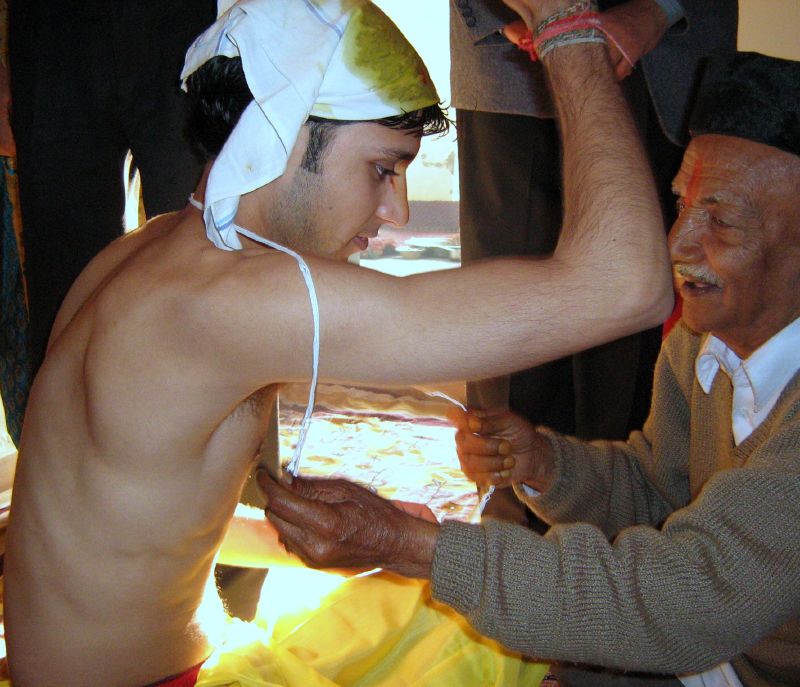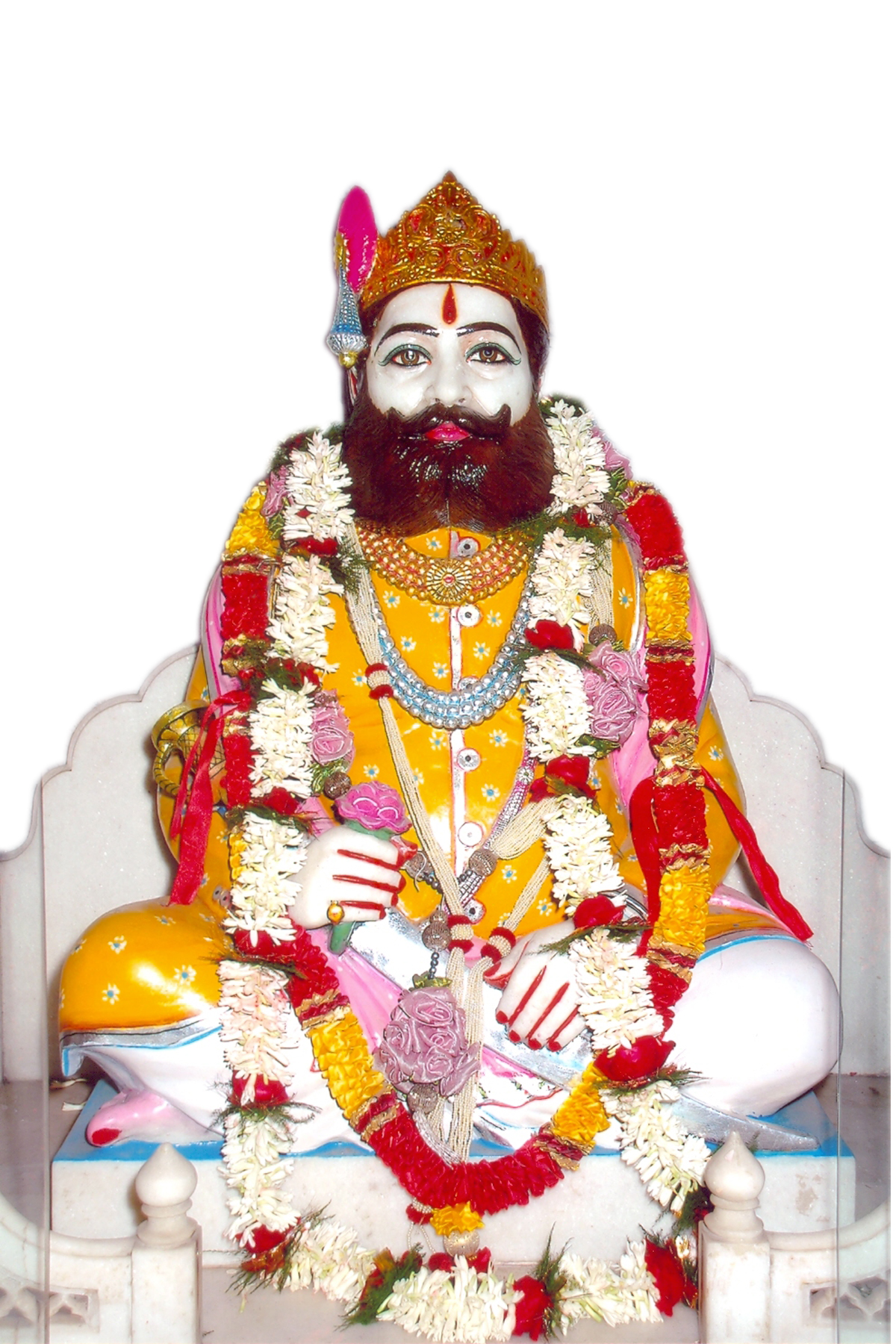|
Vaishya
Vaishya (Sanskrit: वैश्य, ''vaiśya'') is one of the four varnas of the Vedic Hindu social order in India. Vaishyas are classed third in the order of Varna hierarchy. The occupation of Vaishyas consists mainly of agriculture, taking care of cattle, trade and other business pursuits as mentioned in the Bhagavad Gita. Traditional duties Hindu religious texts assigned Vaishyas to traditional roles in agriculture and cattle-rearing, but over time they came to be landowners, traders and money-lenders. They ranked third in the varna system below Brahmins and Kshatriyas and traditionally had the responsibility to provide sustenance or patronage for the higher varnas. The Vaishyas, along with members of the Brahmin and Kshatriya varnas, claim ''dvija'' status ("twice born", a second or spiritual birth) after sacrament of initiation as in Hindu theology. Indian traders were widely credited for the spread of Indian culture to regions as far as southeast Asia. Historicall ... [...More Info...] [...Related Items...] OR: [Wikipedia] [Google] [Baidu] |
Varna (Hinduism)
Varna (, ), in the context of Hinduism, refers to a social class within a hierarchical traditional Hindu society. The ideology of varna is epitomized in texts like '' Manusmriti'', which describes and ranks four varnas, and prescribes their occupations, requirements and duties, or '' Dharma''. *Brahmins: Vedic scholars, priests or teachers. * Kshatriyas: Rulers, administrators or warriors. * Vaishyas: Agriculturalists, farmers or merchants. * Shudras: Artisans, labourers or servants. This quadruple division is a form of social stratification, quite different from the more nuanced system of '' Jātis'', which correspond to the term "caste". The varna system is discussed in Hindu texts, and understood as idealised human callings. The concept is generally traced back to the '' Purusha Sukta'' verse of the Rigveda. In the post- Vedic period, the varna division is described in the '' Mahabharata,'' ''Puranas'' and in the '' Dharmashastra literatures''. The commentary on the Varna ... [...More Info...] [...Related Items...] OR: [Wikipedia] [Google] [Baidu] |
Bania (caste)
Bania (also spelled Baniya, Banija, Banya, Vaniya, Vani, Vania, and Vanya) is a mercantile caste primarily from the Indian states of Rajasthan and Gujarat, with significant diasporic communities in Uttar Pradesh, Madhya Pradesh, West Bengal, Maharashtra (particularly Mumbai) and northern states of India. Traditionally, the Bania community has been associated with occupations such as trade, banking, and money-lending. In modern times, many members of the community are involved in various business and entrepreneurial ventures. Etymology The Hindi term ''baniyā'' is derived from Sanskrit ''vaṇija'' ("trader"), whereas the Marwari ''bā̃ṇyõ'' and Gujarati ''vāṇiyo'' are derived from Sanskrit ''vāṇija'' ("trader"). The community is also known by the term "vanik". In Bengal the term ''Bania'' is a functional catch-all for moneylenders, indigenously developed bankers, readers of grocery items and spices, irrespective of caste. In Maharashtra, the term ''vani'' is used f ... [...More Info...] [...Related Items...] OR: [Wikipedia] [Google] [Baidu] |
Vaishya Community
Vaishya (Sanskrit: वैश्य, ''vaiśya'') is one of the four varnas of the Vedic Hindu social order in India. Vaishyas are classed third in the order of Varna hierarchy. The occupation of Vaishyas consists mainly of agriculture, taking care of cattle, trade and other business pursuits as mentioned in the Bhagavad Gita. Traditional duties Hindu religious texts assigned Vaishyas to traditional roles in agriculture and cattle-rearing, but over time they came to be landowners, traders and money-lenders. They ranked third in the varna system below Brahmins and Kshatriyas and traditionally had the responsibility to provide sustenance or patronage for the higher varnas. The Vaishyas, along with members of the Brahmin and Kshatriya varnas, claim ''dvija'' status ("twice born", a second or spiritual birth) after sacrament of initiation as in Hindu theology. Indian traders were widely credited for the spread of Indian culture to regions as far as southeast Asia. Historicall ... [...More Info...] [...Related Items...] OR: [Wikipedia] [Google] [Baidu] |
Gupta Empire
The Gupta Empire was an Indian empire during the classical period of the Indian subcontinent which existed from the mid 3rd century to mid 6th century CE. At its zenith, the dynasty ruled over an empire that spanned much of the northern Indian subcontinent. This period has been considered as the Golden Age of India by some historians, although this characterisation has been disputed by others. The ruling dynasty of the empire was founded by Gupta (king), Gupta. The high points of this period are the great cultural developments which took place primarily during the reigns of Samudragupta, Chandragupta II and Kumaragupta I. Many Hinduism, Hindu Hindu epics, epics and Hindu literature, literary sources, such as the Mahabharata and Ramayana, were canonised during this period. The Gupta period produced scholars such as Kalidasa, Aryabhata, Varahamihira and Vatsyayana, who made significant advancements in many academic fields. History of science and technology in the Indian subcontin ... [...More Info...] [...Related Items...] OR: [Wikipedia] [Google] [Baidu] |
Kshatriyas
Kshatriya () (from Sanskrit ''kṣatra'', "rule, authority"; also called Rajanya) is one of the four varnas (social orders) of Hindu society and is associated with the warrior aristocracy. The Sanskrit term ''kṣatriyaḥ'' is used in the context of later Vedic society wherein members were organised into four classes: ''brahmin'', kshatriya, ''vaishya,'' and ''shudra''. History Early Rigvedic tribal monarchy The administrative machinery in Vedic India was headed by a tribal king called a Rajan whose position may or may not have been hereditary. The king may have been elected in a tribal assembly (called a Samiti), which included women. The Rajan protected the tribe and cattle; was assisted by a priest; and did not maintain a standing army, though in the later period the rulership appears to have risen as a social class. The concept of the fourfold varna system is not yet recorded. Later Vedic period The hymn '' Purusha Sukta'' in the ''Rigveda'' describes the symbolic creati ... [...More Info...] [...Related Items...] OR: [Wikipedia] [Google] [Baidu] |
Lohana
Lohana are a Hindu ''jāti, caste'', a trading or mercantile community mostly residing in India and some also in Pakistan. The Lohanas are divided into many separate cultural groups as a result of centuries apart in different regions. Thus there are significant differences between the culture, language, professions and societies of Gujarati people, Gujarati Lohanas and Kutchi people, Kutchi Lohanas from Gujarat, India and Sindhi people, Sindhi Lohanas from Sindh, Pakistan (the latter having largely migrated to India as well). Origin The Lohanas belong to Vaishya caste, traditionally merchants in Hindu caste system, although they claim that they are of Kshatriya origin. According to André Wink, at least in the Muslim sources, Lohanas appear to be subdivisions of the Jats or to be put on a par with the Jats of Brahmin dynasty of Sindh, Chacha's Sind. According to David Cheesman, the Lohana who immigrated from Punjab to Sindh in the distant past, may have been descended from ... [...More Info...] [...Related Items...] OR: [Wikipedia] [Google] [Baidu] |
Dvija
Dvija (Sanskrit: द्विज) means "twice-born". The concept is premised on the belief that a person is first born physically and at a later date is born for a second time spiritually, usually when he undergoes the rite of passage that initiates him into a school for Vedic studies.Dvija Encyclopedia Britannica (2014) The term also refers to members of the three varnas in the traditional Hindu social system, or social classes — the s (priests and teachers), s (rulers and warriors ), ... [...More Info...] [...Related Items...] OR: [Wikipedia] [Google] [Baidu] |
Kshatriya
Kshatriya () (from Sanskrit ''kṣatra'', "rule, authority"; also called Rajanya) is one of the four varnas (social orders) of Hindu society and is associated with the warrior aristocracy. The Sanskrit term ''kṣatriyaḥ'' is used in the context of later Vedic society wherein members were organised into four classes: ''brahmin'', kshatriya, '' vaishya,'' and '' shudra''. History Early Rigvedic tribal monarchy The administrative machinery in Vedic India was headed by a tribal king called a Rajan whose position may or may not have been hereditary. The king may have been elected in a tribal assembly (called a Samiti), which included women. The Rajan protected the tribe and cattle; was assisted by a priest; and did not maintain a standing army, though in the later period the rulership appears to have risen as a social class. The concept of the fourfold varna system is not yet recorded. Later Vedic period The hymn '' Purusha Sukta'' in the ''Rigveda'' describes the symbolic crea ... [...More Info...] [...Related Items...] OR: [Wikipedia] [Google] [Baidu] |
Brahmins
Brahmin (; ) is a ''Varna (Hinduism), varna'' (theoretical social classes) within Hindu society. The other three varnas are the ''Kshatriya'' (rulers and warriors), ''Vaishya'' (traders, merchants, and farmers), and ''Shudra'' (labourers). The traditional occupation of Brahmins is that of priesthood (purohit, pandit, or pujari) at Hindu temples or at socio-religious ceremonies, and the performing of rite of passage rituals, such as solemnising a wedding with hymns and prayers.James Lochtefeld (2002), Brahmin, The Illustrated Encyclopedia of Hinduism, Vol. 1: A–M, Rosen Publishing, , page 125 Traditionally, Brahmins are accorded the supreme ritual status of the four social classes, and they also served as spiritual teachers (guru or acharya). In practice, Indian texts suggest that some Brahmins historically also became agriculturalists, warriors, traders, and had also held other occupations in the Indian subcontinent.GS Ghurye (1969), Caste and Race in India, Popular Prakasha ... [...More Info...] [...Related Items...] OR: [Wikipedia] [Google] [Baidu] |
Agrahari
Agrahari, Agraharee or Agarhari is an Indian Vaishya community. They are the descendants of legendary king Agrasena. Predominantly, they are found in the Indian state of Uttar Pradesh, Madhya Pradesh, Jharkhand, Chhattisgarh and Terai region of Nepal. History In 1916, Robert Vane Russell, an ethnologist of the British Raj period wrote, Agrahari,found chiefly Jubbulpore district and Raigarh State. Their name connected with the cities with Agra and Agroha (town), Agroha. William Crooke states that Agrahari claim partly a Brahmin and partly a Brāhmanical descent, and wear the sacred thread. Like that of the Agarwal, Agarwāla their name has been connected with the cities of Agra and Agroha (town), Agroha. There is no doubt that they are closely connected with the Agarwal, Agarwālas. In Chhattisgarh, Central Provinces of British India, some of few Agrahari were Malgujars/Zamindars. The ruler of Raigarh awarded the title Shaw to Agraharis. The title still continues. Agrahari Si ... [...More Info...] [...Related Items...] OR: [Wikipedia] [Google] [Baidu] |
Greater India
Greater India, also known as the Indian cultural sphere, or the Indic world, is an area composed of several countries and regions in South Asia, East Asia and Southeast Asia that were historically influenced by Indian culture, which itself formed from the various distinct indigenous cultures of South Asia. It is an umbrella term encompassing the Indian subcontinent and surrounding countries, which are culturally linked through a diverse cultural cline. These countries have been transformed to varying degrees by the acceptance and introduction of cultural and institutional elements from each other. The term Greater India as a reference to the Indian cultural sphere was popularised by a network of Bengali scholars in the 1920s, but became obsolete in the 1970s. Since around 500 BCE, Asia's expanding land and maritime trade had resulted in prolonged socio-economic and cultural stimulation and diffusion of Buddhist and Hindu beliefs into the region's cosmology, in particular in ... [...More Info...] [...Related Items...] OR: [Wikipedia] [Google] [Baidu] |





